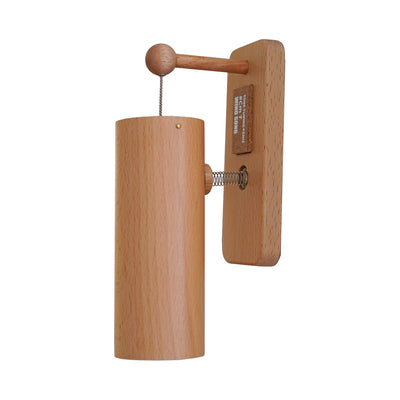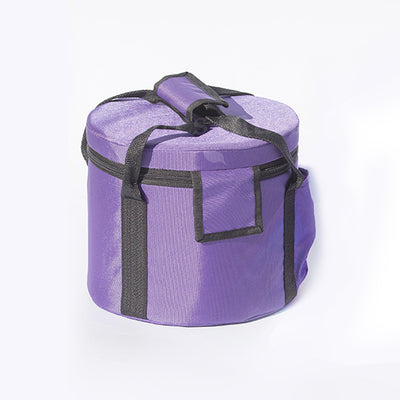432hz or 440hz? Handpan, Sound Bowls
When it comes to the tuning of musical instruments, there's an age-old debate that often pops up—should you tune to 432Hz or 440Hz? If you're a music lover or someone interested in sound healing, you might already be familiar with these two frequencies. But for those who are just getting started, the choice might seem confusing. In our previous article, we have also discussed in detail the impact of more frequencies 40hz-963hz on us.
In this article, we'll unpack the differences between these two frequencies, what they’re typically used for, and how they can impact your experience, whether you're a musician, a listener, or someone looking for a deeper connection with sound.
Understanding 432Hz and 440Hz: What’s the Difference?
Before we get into the benefits of each frequency, let’s quickly go over what 432Hz and 440Hz actually mean.
440Hz refers to the standard pitch of the musical note A above middle C (A4), which vibrates 440 times per second. This frequency has been widely adopted across the music industry since the mid-20th century and is considered the "standard tuning" for most instruments, including pianos, violins, and guitars.
432Hz, on the other hand, is often called "the natural tuning." This frequency is based on the idea that music tuned to 432Hz is more aligned with the natural harmonic frequencies of the universe. It’s often considered to have a calming, soothing effect on the body and mind.
So, the main difference comes down to the pitch: 440Hz is higher, while 432Hz is slightly lower. But there’s more to it than just that! Let’s take a deeper dive.
440Hz: The Standard for Modern Music
When you walk into a concert hall or listen to a recording on the radio, chances are, the music you’re hearing has been tuned to 440Hz. Since the mid-20th century, 440Hz has been the global standard for tuning instruments, and it’s the most commonly used tuning in the entertainment world.
Why 440Hz?
-
Global Standardization: One of the main reasons for the popularity of 440Hz is its global standardization. When musicians across the world tune to the same frequency, it ensures that instruments can play in harmony with each other, regardless of where they’re located. This is especially important in orchestras and other large ensembles.
-
Modern Musical Context: 440Hz works well for the modern music landscape—whether it's pop, rock, jazz, or classical. It has become deeply ingrained in the way we perceive and enjoy music, offering clear, crisp tones that resonate with our modern sonic preferences.
-
Familiarity: For most people, 440Hz is what they’re used to. It’s what their favorite artists use, what’s taught in music schools, and what’s heard on streaming platforms. There’s a certain familiarity to it that makes it the go-to choice for musicians and listeners alike.
432Hz: The Healing Frequency
In contrast to 440Hz, 432Hz is gaining popularity among those who seek a deeper connection to the sound of music. Some believe that this frequency has inherent healing properties and can have a more profound impact on the mind and body.
Why 432Hz?
-
Calming and Soothing: Many proponents of 432Hz tuning believe it has a calming and grounding effect. The lower pitch is said to resonate with the natural vibrations of the universe, which can help reduce stress, promote relaxation, and even improve sleep quality.
-
Harmonic Resonance with Nature: Supporters of 432Hz suggest that it’s mathematically aligned with the frequency of the earth and the universe. For example, it’s said to be in harmony with the Schumann resonance, which is the electromagnetic frequency of the Earth. This is why some people argue that music tuned to 432Hz feels more "natural" and authentic.
-
Meditation and Healing: 432Hz has become a popular choice for meditation, yoga, and sound healing practices. Many sound therapists and holistic practitioners use music tuned to 432Hz because they believe it can promote healing, balance energy, and enhance meditation sessions.
-
More Melodic and Warm: Many people who listen to 432Hz music report that it sounds more melodic, warm, and pleasant compared to the sharper tones of 440Hz. Some even say it feels like the music "flows" more naturally.
432Hz vs 440Hz: Which Should You Choose?
So, which frequency is the better choice? The answer largely depends on what you’re looking for and what kind of experience you’re after. For Handpan, if your purpose is sound therapy, choose 432Hz, and the material is best to choose STL. The previous article "Guide to choosing the material of a handpan" also has a detailed introduction to Handpan materials.
-
For Performance and Entertainment: If you're a musician or music enthusiast who enjoys playing or listening to mainstream music, 440Hz is your best bet. It’s the standard for most performances, albums, and music schools, and it’s designed to provide clear, crisp sound that’s appealing to modern ears.
-
For Meditation and Relaxation: If you're more interested in using music as a tool for meditation, relaxation, or healing, you might want to consider 432Hz. Many people find that 432Hz music helps them enter a deeper state of relaxation and mindfulness. It’s also widely used in sound therapy and healing practices.
-
For Collaborating with Other Musicians: If you plan to collaborate with other musicians, it’s likely they’ll be tuning to 440Hz. Most instruments, especially in Western music traditions, are tuned to 440Hz, so if you want to play in tune with others, sticking with 440Hz is the way to go.
-
For Personal Exploration and Connection: If you're someone who enjoys experimenting with sound and music and wants to explore how different frequencies affect your body and mind, trying 432Hz might offer some unique insights. Many people report feeling more connected to the music when it’s tuned to 432Hz.
Conclusion: Tune In to What Feels Right for You?
At the end of the day, the choice between 432Hz and 440Hz comes down to what resonates best with you. If you’re seeking a more conventional listening experience or playing with other musicians, 440Hz is the way to go. However, if you're looking for a deeper, more spiritual connection through music or sound healing, 432Hz might be worth exploring.
The beauty of music lies in its ability to connect with us in unique ways, and whether you're listening to 432Hz or 440Hz, the most important thing is that the music serves its purpose for you—whether that's for entertainment, relaxation, or personal growth.
So, which frequency do you prefer? Have you ever experimented with 432Hz tuning, or do you find 440Hz to be the best for your musical tastes? Let me know in the comments below!








Leave a comment